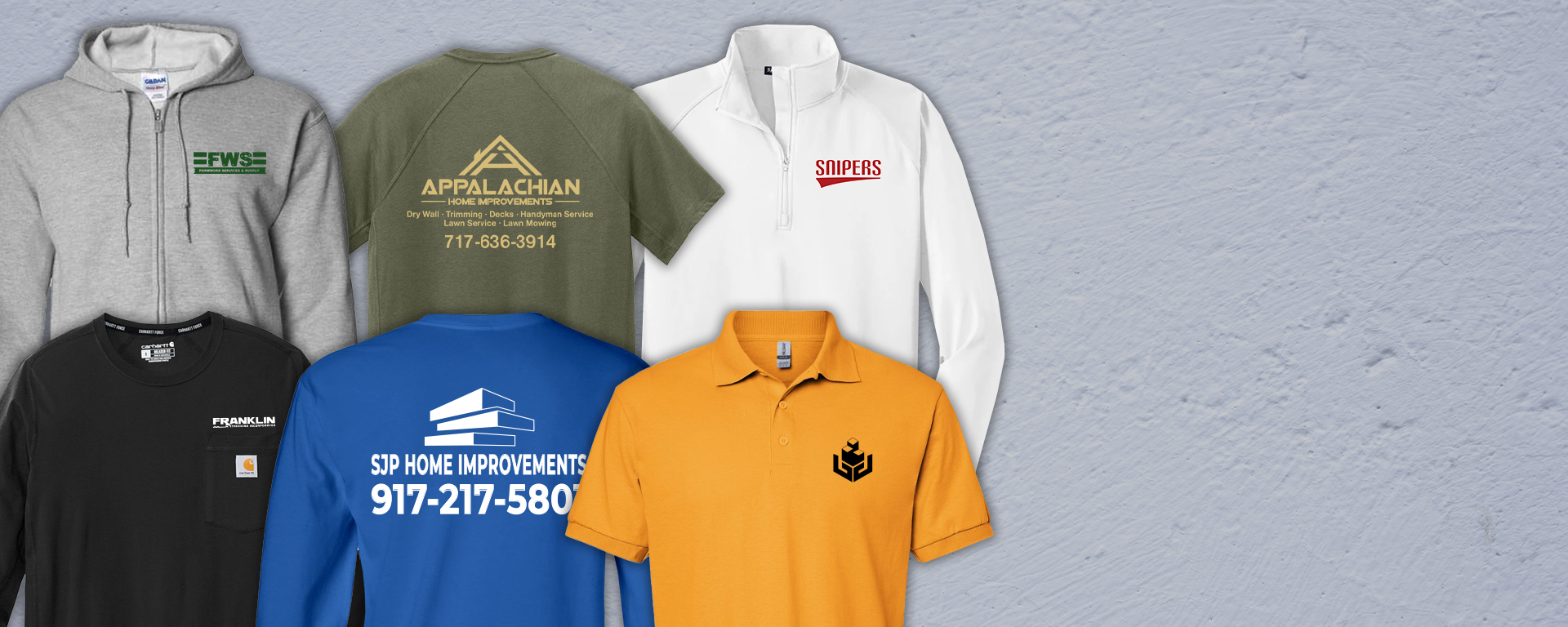How Branded Clothing Uses Fabric to Match Season and Occasion
How Branded Clothing Uses Fabric to Match Season and Occasion
Blog Article
Comprehending Apparel: The Importance of Fabric Selections in Your Closet
The choice of material in clothing plays a pivotal role in both visual appeals and capability. Different products use differing degrees of sturdiness, breathability, and convenience, directly influencing the wearer's experience. Understanding these nuances can boost one's wardrobe considerably. Several ignore how these selections can impact not just personal style, but additionally sustainability. What textile decisions could redefine your wardrobe and straighten it with both design and duty?
The Duty of Material in vogue and Performance

Typical Material Kinds and Their Characteristics
When choosing clothing, comprehending the characteristics of typical material types is vital for making educated options. Cotton, a widely-used all-natural fiber, is known for its soft qualities, flexibility, and breathability, making it appropriate for casual wear and daily garments. Linen, one more all-natural alternative, flaunts exceptional moisture-wicking properties and a distinctive appearance, perfect for cozy climates.Wool, often preferred for its heat and sturdiness, varies in fineness; merino wool is soft versus the skin, while coarser kinds are utilized for outerwear. Artificial textiles like polyester and nylon offer durability and resistance to creases, making them prominent for activewear and traveling garments. Blends, which integrate natural and synthetic fibers, can enhance capability while keeping comfort. By recognizing these material characteristics, individuals can pick garments that lines up with their way of living and aesthetic choices.
Breathability and Comfort: Choosing the Right Fabrics for Various Environments
Choosing the ideal fabrics for various environments can considerably boost convenience and overall wearability. Breathable materials are important in hot climates, as they allow air blood circulation and moisture dissipation. Fabrics such as cotton, linen, and moisture-wicking synthetics efficiently attract sweat away from the body, keeping the user cool and completely dry. Alternatively, in colder environments, thicker fabrics like wool or fleece supply insulation while retaining breathability, ensuring warmth without overheating.Additionally, the option of fabric weight plays a vital duty; lightweight materials are more suitable for summertime, whereas larger alternatives are suited for winter wear. Comprehending the one-of-a-kind properties of each textile enables individuals to clothe properly for varying weather. Inevitably, choosing comfortable and breathable materials customized to particular climates can substantially boost everyday convenience and enhance the general experience of putting on apparel.
Longevity and Care: Exactly How Fabric Impacts Longevity of Your Wardrobe
Choosing the right products can greatly affect the longevity and care needs of a wardrobe. Fabrics such as cotton and polyester are recognized for their resilience and ease of maintenance, making them optimal for daily wear. In contrast, delicate products like silk and lace require more careful handling and specialized cleaning techniques, which can raise the moment and effort needed for care. Branded Clothing.Durability is also influenced by the material's weave and surface; snugly woven textiles often tend to resist wear and tear much better than loosely woven alternatives. Additionally, synthetic blends usually give improved toughness, integrating the finest top qualities of multiple fibers.Understanding the treatment guidelines for each and every material is crucial, as inappropriate washing or drying can cause early wear. Ultimately, selecting long lasting products can lead to a longer-lasting closet, decreasing the frequency of replacements and adding to an extra lasting fashion selection
The Impact of Textile on Fit and Shape

Lasting Fabric Options: Making Eco-Friendly Choices
The impact of textile expands beyond fit and silhouette to directory include environmental variables, triggering a growing passion Click Here in lasting textile choices. Green textiles, such as organic cotton, hemp, and Tencel, are acquiring grip amongst consumers that prioritize sustainability in their wardrobes. These products are frequently generated with less chemicals and water, lowering their ecological footprint.Additionally, recycled materials, made from post-consumer waste, use an innovative solution to the fabric market's air pollution issue. Brands significantly welcome openness in their sourcing techniques, permitting customers to make informed decisions concerning their purchases.Choosing sustainable fabrics not only supports moral practices yet likewise encourages the apparel industry to adopt even more responsible production methods. As understanding of environmental problems climbs, people are advised to assess the lasting influence of their material options, fostering a motion in the direction of an extra sustainable and ecologically conscious technique to style.
Boosting Design: Exactly How Fabric Can Transform an Outfit
While numerous may concentrate on color and cut when selecting an attire, the choice of material plays an important function in boosting style and boosting general look. Different products communicate unique moods and messages; for instance, silk exudes deluxe and elegance, while denim offers a laid-back, loosened up vibe. The appearance and drape of a material can substantially alter the silhouette, with organized fabrics giving a refined appearance and softer ones creating an extra fluid, kicked back aesthetic.Moreover, the weight of the material influences wearability across periods. Lightweight textiles like bed linen and cotton are perfect for summertime, while much heavier materials such as woollen and velour supply heat and style in chillier months. Comprehending fabric homes, such as breathability and stretch, also empowers people to make informed selections that boost comfort without jeopardizing style. Eventually, the best textile can transform an outfit from regular to remarkable, making it an important factor to consider in any kind of wardrobe.
Regularly Asked Concerns
Exactly how Do I Identify the Textile Material of My Clothing?
To determine textile material, one can examine treatment labels, conduct shed examinations for fiber This Site recognition, or speak with textile swatches. These techniques assist distinguish materials, making certain educated options for clothes treatment and upkeep in daily wear.
Can Textile Choice Affect My Mood or Confidence?
Fabric option can considerably influence a person's mood and self-confidence. Branded Clothing. Certain products may stimulate feelings of convenience or sophistication, while others can really feel unflattering or restrictive, ultimately influencing self-perception and emotional health throughout the day
What Fabrics Are Finest for Delicate Skin?
For individuals with sensitive skin, natural fabrics like bed linen, bamboo, and cotton are commonly recommended. These materials are breathable, hypoallergenic, and less likely to trigger inflammation, making them suitable selections for convenience and skin health and wellness.
Just how Do I Appropriately Wash and Care for Different Fabrics?
To appropriately care and clean for different textiles, one must think about each product's particular requirements, consisting of temperature setups, detergents, and drying methods, making certain durability and keeping the fabric's initial top qualities for suitable usage.
Are There Certain Fabrics for Athletic or Efficiency Use?
Athletic or efficiency wear usually utilizes materials such as polyester, nylon, and spandex. These materials are developed for moisture-wicking, breathability, and adaptability, improving motion and convenience during physical tasks while providing sturdiness and support. On the other hand, in colder environments, thicker fabrics like wool or fleece give insulation while preserving breathability, ensuring heat without overheating.Additionally, the choice of fabric weight plays a crucial function; light-weight materials are better for summer season, whereas heavier options are fit for winter wear. In contrast, delicate products like silk and lace call for even more careful handling and specialized cleaning approaches, which can enhance the time and effort required for care.Durability is additionally influenced by the textile's weave and coating; firmly woven materials often tend to withstand wear and tear better than loosely woven options. In comparison, stiff textiles can limit activity but provide a timeless, polished look.Moreover, the thickness and structure of the material can influence the aesthetic understanding of body form. The effect of fabric extends beyond fit and shape to incorporate environmental factors, prompting an expanding interest in lasting fabric choices. The structure and drape of a textile can significantly modify the silhouette, with structured fabrics giving a sleek appearance and softer ones developing an extra fluid, kicked back aesthetic.Moreover, the weight of the fabric affects wearability across seasons.
Report this page